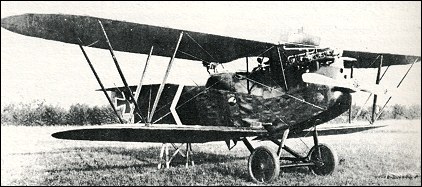Hello All,
I'm in the process of gathering information on the Phonix C.I. My references are very slim at best. This upcoming project will be another vacuform project so I'll need plenty of references for the interior. If you can point me in the right direction or can share any drawings or information it would be very much appreciated. Thanks in advance.
Regards,
Gregory Jouette
Early Aviation
Discuss World War I and the early years of aviation thru 1934.
Discuss World War I and the early years of aviation thru 1934.
Hosted by Jim Starkweather
Phonix C.I Information ?
gajouette

Joined: February 01, 2007
KitMaker: 365 posts
AeroScale: 356 posts

Posted: Saturday, April 17, 2010 - 12:55 PM UTC

JackFlash

Joined: January 25, 2004
KitMaker: 11,669 posts
AeroScale: 11,011 posts

Posted: Monday, April 19, 2010 - 01:52 PM UTC
I may have a reference or two. I'll check.

JackFlash

Joined: January 25, 2004
KitMaker: 11,669 posts
AeroScale: 11,011 posts

Posted: Wednesday, April 21, 2010 - 02:42 AM UTC
To be clear. Phönix built 2 aircraft with the designation of "C.I". One was the company's design. The Phönix works turned out 1,084 aeroplanes of 22 different types during World War I, starting with licence-built Albatros two-seaters, passing next to Brandenburg types and ending with aircraft of its own design.
The C.I was an ugly but functional two-seat armed-reconnaissance and general-purpose biplane, which became standardised equipment of the Austro-Hungarian air arm from 1917. In addition to reconnaissance it undertook artillery directing by wireless and, in an emergency, contour fighting and bombing (four 12kg or two 25kg bombs). It was on a C.I that the observer Leut Barwig brought down the leading Italian fighter pilot Maj Baracca. A total of 110 was built, powered by the 172kW Hiero engine: the first delivered on 2 March 1917 and the last on 1 October 1918. Armament comprised one forward-firing and one rear-mounted Schwarzlose machine-guns. from aviastar.org
Seen below.

The other was a Brandenberg licence built 2 seater.
The C.I was an ugly but functional two-seat armed-reconnaissance and general-purpose biplane, which became standardised equipment of the Austro-Hungarian air arm from 1917. In addition to reconnaissance it undertook artillery directing by wireless and, in an emergency, contour fighting and bombing (four 12kg or two 25kg bombs). It was on a C.I that the observer Leut Barwig brought down the leading Italian fighter pilot Maj Baracca. A total of 110 was built, powered by the 172kW Hiero engine: the first delivered on 2 March 1917 and the last on 1 October 1918. Armament comprised one forward-firing and one rear-mounted Schwarzlose machine-guns. from aviastar.org
Seen below.

The other was a Brandenberg licence built 2 seater.
 |






